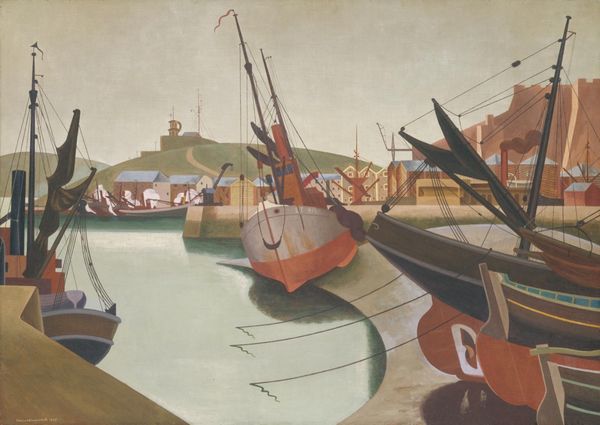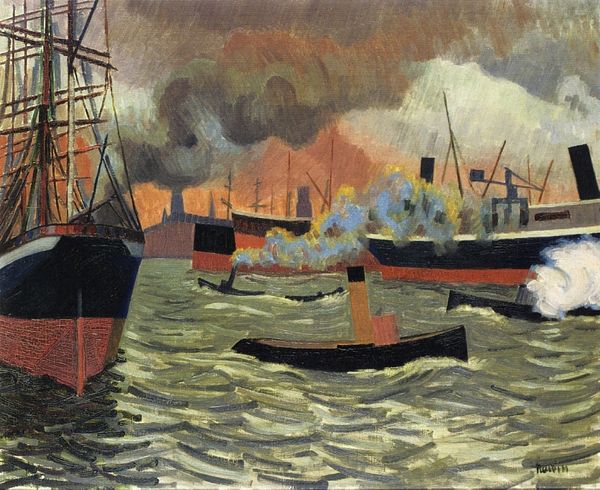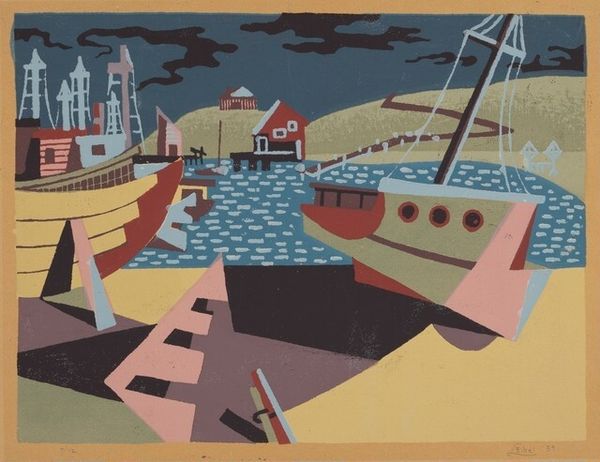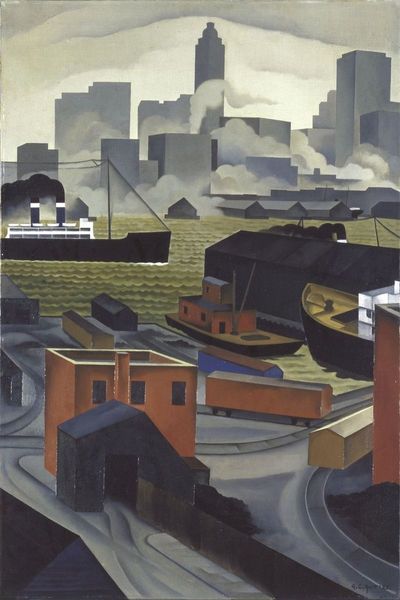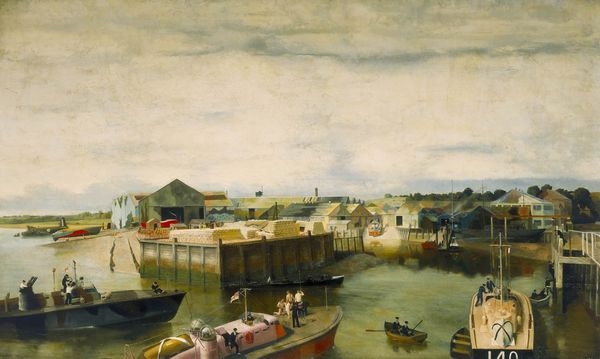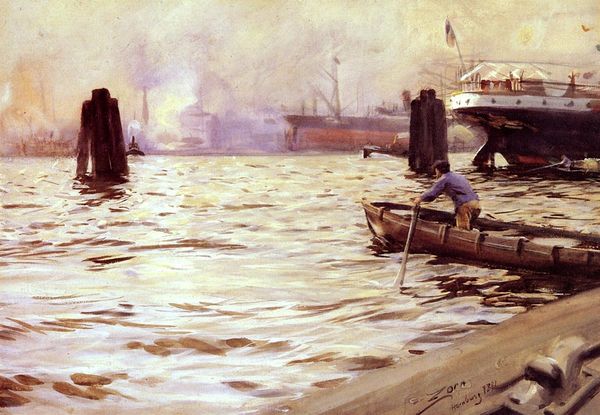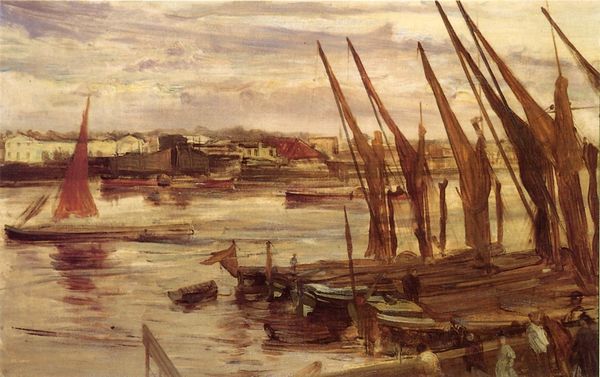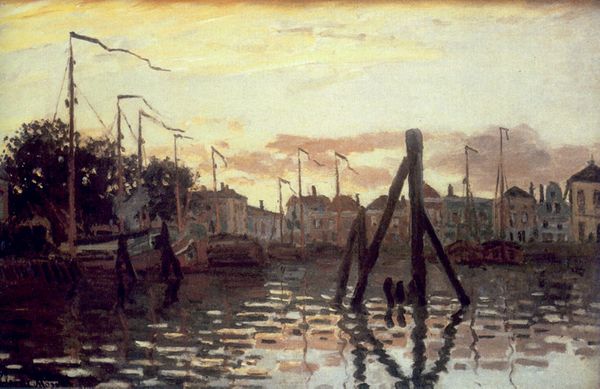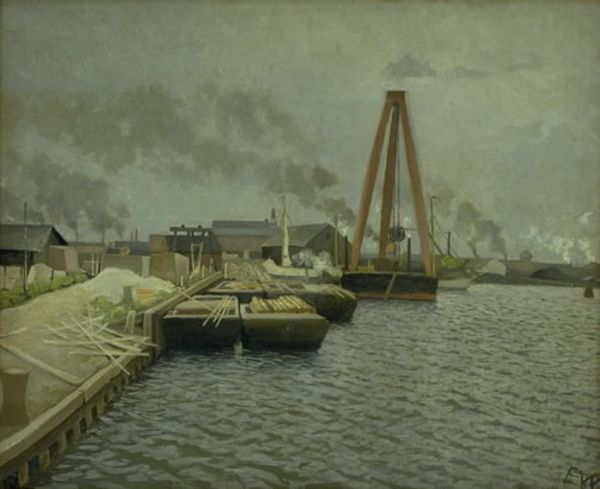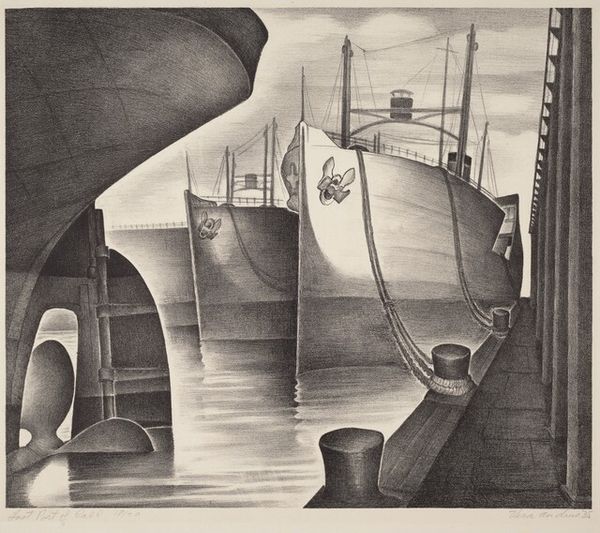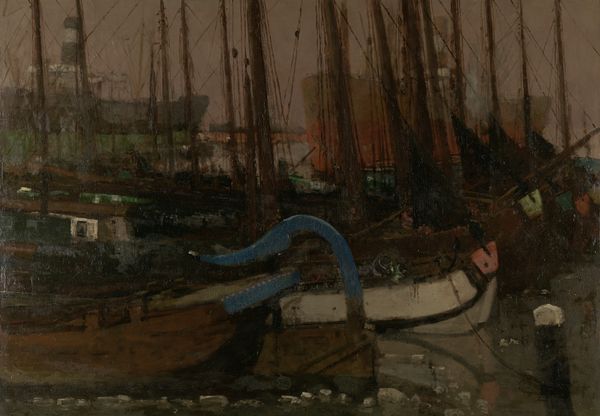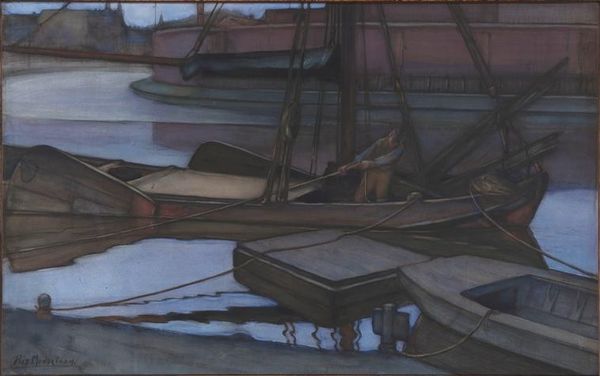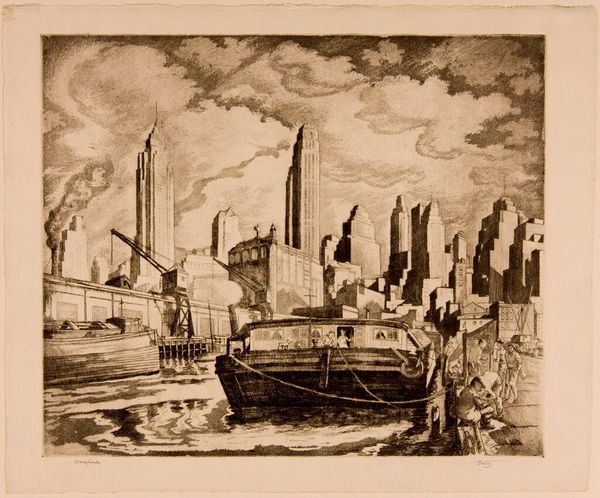
Dimensions: support: 533 x 748 mm frame: 735 x 946 x 78 mm
Copyright: © The estate of William Roberts | CC-BY-NC-ND 4.0 DEED, Photo: Tate
Curator: William Roberts' "The Port of London" presents a scene of industrial activity, dominated by repetitive geometric forms. What’s your immediate take? Editor: It's like stepping back into a dream of industry, all muted colors and quiet labor. Sort of makes you wonder about the stories held within the wood of those old boats, doesn't it? Curator: Roberts employs a muted palette and a careful arrangement of shapes—note how verticals of masts and chimneys contrast with the horizontals of the docks. Editor: Yeah, it's all very structured. Yet, there's this underlying feeling of melancholy in the smoky atmosphere. It's the romance of labor, but with a touch of the inevitable fading, maybe? Curator: Perhaps. Roberts’ work often navigates between celebrating modernity and questioning its impact on human experience. Editor: True. I mean, beyond the formal stuff, it's a real mood piece. Makes you think about progress and its cost, doesn’t it? Curator: Indeed, an interesting intersection to ponder. Editor: Definitely leaves you with a lingering thought or two!
Comments
tate 7 months ago
⋮
http://www.tate.org.uk/art/artworks/roberts-the-port-of-london-t05761
Join the conversation
Join millions of artists and users on Artera today and experience the ultimate creative platform.
tate 7 months ago
⋮
One aspect of urban life which interested Roberts was life on the river Thames and the people that worked on the ships, barges and docks. This picture of the London docks in the 1920s, with ships loading and unloading, is less angular and stylised and emptier of people than many of Roberts's compositions of that time, for example 'The Cinema' 1920, also on display. By the late 1920s, his figures had begun to be more rounded and monumental. The beginnings of this change of style can be seen in this work. Gallery label, August 2004
